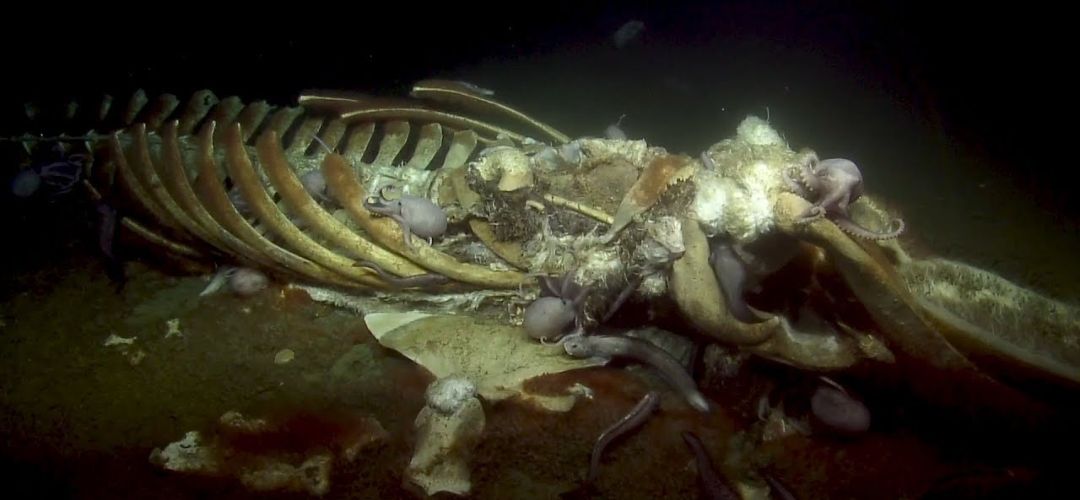
There is an entire world out in the deep realms of the planet’s waters that is home to creatures you’d never know existed. Today, as we celebrate World Oceans Day, we take a moment to shed light on a series of deep sea creatures.
These unlikely species have been seen before in person, but not by many. And with their intense and almost surreal appearances and activities, maybe that is for the best. Regardless, on this World Oceans Day, we wanted to share exploration into the deep sea, of creatures who will make you think more about what this planet holds.
13,000 feet deep: the Dumbo Octopus

If you just thought of Disney’s 1941 film Dumbo, then you guessed it right.
With two ear-like finches extending from above each eye, this octopus was indeed named after the famous cartoon.
But rather than flying high in the sky, the Dumbo Octopus is actually the deepest-living creature of its kind. Inhabiting waters of at least 13,000 feet in depth, its average size is about 11 inches, so you are probably just as likely to run into one of these as you are of encountering a flying elephant.
3,330 feet deep: the Barreleye

A creature that truly propels us to the other dimension that is deep, deep water is the Barreleye fish or “spookfish,” which… really is a little spooky.
With a completely see-through top part of the head, the Barreleye somewhat looks like an animated, CGI, sci-fi organism. Surprisingly enough, the fish usually only measures about 4 inches in length, making its appearance probably more mind-boggling than it is intimidating.
Mostly found in Northern Pacific regions, the fish can remain completely motionless due to its flat fins, making it just a little spookier.
2,000 feet deep: the Vampire Squid

In the same way that vampires live during the night, the squid of the same name thrives in the darkest of waters, where virtually no light ever shines through.
Able to survive at ocean depths with the lowest of oxygen concentrations, the Vampyroteuthis infernalis is much less threatening than it sounds. Indeed, no blood-sucking here.
Although its scientific name stands for “vampire squid from hell,” it only feeds off of particles drifting through the deep waters in which it lives.
700 feet deep: Rhinopias
Considered one of the holy grail’s of underwater photography, this genus of the scorpionfish is housed in the Pacific and Indian oceans.
It is one of the reasons Lembeh in Indonesia is a sought-out destination for underwater photographers. Artist Nadya Kulagina was able to get up close and personal with the creature.
Known to move very slowly, if at all, Rhinopias actually aren’t completely harmless. Behaving like other scorpionfish, they can camouflage to their surroundings quite convincingly.
So while their relatively huge mouths won’t be as much of a problem for you as it may be for other small ocean creatures, their venomous spines might. Then again, unless you are actively looking for one, finding yourself nose to nose with one like Kulagina did is rather unlikely.
Back at sea level: The Mudskipper
World famous photographer Thomas Peschak has captured creatures from the depths of the ocean to its surfaces.
See his shot of a Mudskipper; the result of remarkable perseverance and patience from the artist. On the coasts of Kuwait, the fish can lie motionless on muddy surfaces for hours on end, making this photograph of it thrust into the air a rarity.
Though not dangerous in its nature, it is not to be mistaken with a creature of the same family of Goby fish.
The latter has been associated with cases of tetrodotoxin poisoning. Mostly defensive with its peers while in the wild, the Mudskipper is known to be misleadingly aggressive. However, that does not stop some individuals from keeping one at home in a tank.
Wild deep sea creatures
These creatures live so deep in the ocean that their pictures are most often captured by robotic gear and apparatus. Thus, none of us have actually ever seen many of them in the flesh.
However, that does not stop talented photographers from adventuring into the sea to capture mind-blowing images.
From the shores we see to the extravagant and unattainable depths of the ocean, we remain unaware of a lot of what lives on Earth. There are unimaginable kinds of beings, many that would be difficult to make up. On World Oceans Day, let’s celebrate the wilderness and uniqueness of the waters that make up our home.


